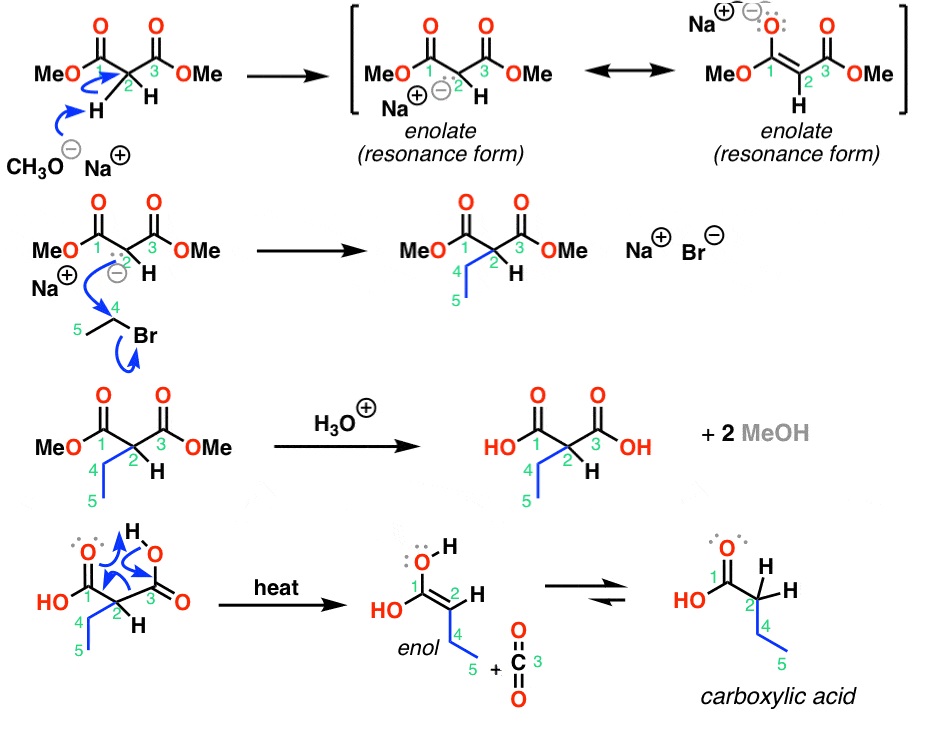
The carbons alpha to carbonyl groups can be deprotonated by a strong base. The carbanion formed can undergo nucleophilic substitution on the alkyl halide, to give the alkylated compound. On heating, the di-ester undergoes thermal decarboxylation, yielding an acetic acid substituted by the appropriate R group. Thus, the malonic ester can be thought of being equivalent to the -CH2COOH synthon.
The esters chosen are usually the same as the base used, i.e. ethyl esters with sodium ethoxide. This is to prevent scrambling by transesterification.
Malonic esters are more acidic than simple esters, so that alkylations can be carried out via enolate formation promoted by relatively mild bases such as sodium alkoxide, and subsequent alkylation with halides. An excess of ester must be used to prevent dialkylated products. Carboxylic acids may optionally be obtained after hydrolysis and decarboxylation.
Related to the Claisen condensation.
Intramolecular dialkylation can lead to interesting products such as cyclobutanes.
|
